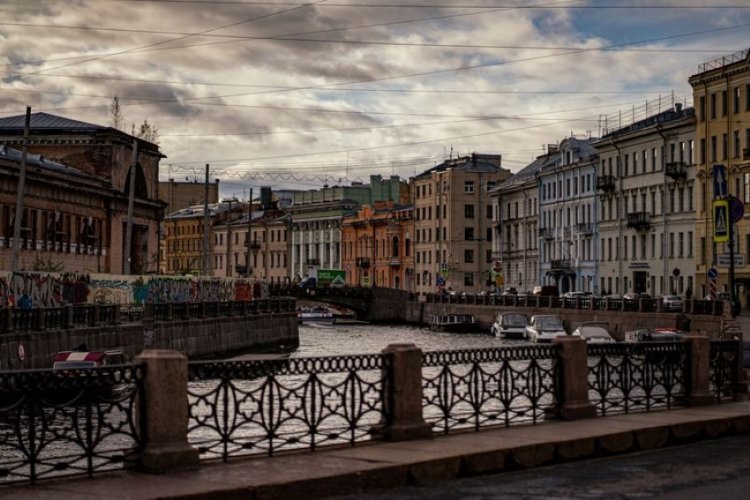Saint Petersburg - Russian Destinations
St. Petersburg, previously known as Petrograd (1914–1924), and then Leningrad (Leningrad) (1924–1991), is located on the Neva River, at the head of the Gulf of Finland on the Baltic Sea. It is the second-largest city in Russia, after Moscow. It is one of the most beautiful cities in the world, which harmonizes its captivating architecture and attracts tourists from all ...

St. Petersburg, formerly known as Petrograd (1914–1924), and then Leningrad (1924–1991), is a city located on the Neva River, at the head of the Gulf of Finland on the Baltic Sea.
It is the second-largest city in Russia, after Moscow. It is one of the most beautiful cities in the world, which harmonizes its captivating architecture and attracts tourists from all over the world.
According to the 2018 census, it had a population of 5,351,935 and covers a total area of 1,439 km.
The city in the past
The city was founded by Emperor Peter the Great on May 27, 1703, on the site of a conquered Swedish fortress. It served as the capital of the Russian Empire and the later Russian Empire from 1713 to 1918 (it was replaced by Moscow for a short time between 1728 and 1730). After the October Revolution, the Bolsheviks moved the government to Moscow. On September 1, 1914, after the outbreak of the First World War, the tsarist government renamed the city to Petrograd, meaning "Peter's city", to get rid off of the German words Sankt and Burg. On January 26, 1924, shortly after the death of Vladimir Lenin, it was renamed Leningrad, which means "Lenin's city". On September 6, 1991, the original name of St. Petersburg was restored by a city referendum. Today, in the English-speaking areas, the city is known as "St. Petersburg". Locals often call the city by its abbreviated nickname, Peter.
Today, St. Petersburg is a cultural and scientific center. The city has more than a hundred museums, about fifty theaters, it houses the oldest university in Russia and one of the largest museums in the world, the Hermitage.
St. Petersburg in the modern era
In modern times, St. Petersburg is considered the northern capital and serves as the home of some federal government bodies, such as the Constitutional Court of Russia and the Heraldic Council of the President of the Russian Federation. It is also the seat of the National Library of Russia and the planned location for the Supreme Court of the Russian Federation. The historical center of St. Petersburg and groups of monuments are UNESCO World Heritage Site, so it is also called the Russian Capital of Culture. St. Petersburg is, as we said, home to The Hermitage, one of the largest art museums in the world
St. Petersburg is the cultural center of Russia where the most famous theaters are - The Mariinsky Theatre, Tovstonogov Bolshoi Drama Theater, The Alexandrinsky Theatre, and others.
Geography - white nights
Since the 18th century, the city terrain has been artificially raised, in some places by more than 4 m, creating the connection of several islands and changing the hydrology of the city. In addition to the Neva and its tributaries, other important rivers in the federal area of St. Petersburg are the Sestra, Okhta, and Izhora. The largest lake is Sestroretsky Razliv in the north, followed by Lakhtinsky Razliv, Suzdal Lakes, and other smaller lakes. Due to its northern position at 60 ° N latitude, the length of the day in Petersburg varies in season, ranging from 5 hours 53 minutes to 18 hours 50 minutes. The period from mid-May to mid-July when dusk can last all night is called white nights. St. Petersburg is about 165 km (103 miles) from the border with Finland, connected to it by the M10 motorway.
Climatic conditions
Under the Köppen climate classification, St. Petersburg is classified as Dfb, a humid continental climate. Precisely moderate cyclone action in the Baltic Sea results in warm, humid, and short summers, and long, moderately cold humid winters. The climate in St. Petersburg is close to that in Helsinki, although it is colder during winter and warmer in summer due to the eastern position. The maximum temperature in July is 23 ° C, and the minimum temperature in February is -8.5 ° C (16.7 ° F); during the summer heatwave of the northern hemisphere in 2010, an extreme temperature of 37.1 ° C (98.8 ° F) occurred. A winter minimum of -35.9 ° C (-32.6 ° F) was recorded in 1883. The average annual temperature is 5.8 ° C (42.4 ° F).
Check out the video below:
By: Olivia J. - Gossip Whispers





























